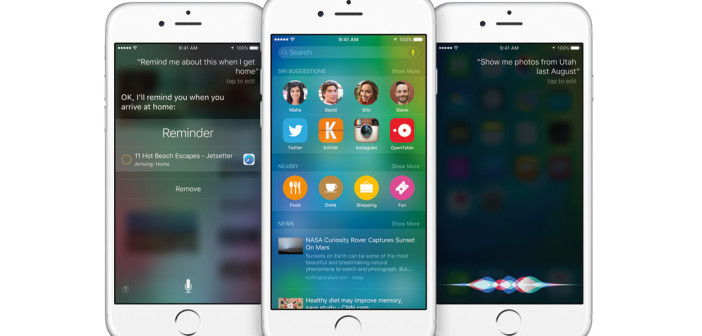Recorded slowest growth rate since 2013 and smartphone sales declined for first time in China
Worldwide smartphone sales recorded the slowest growth rate since 2013 in the second quarter of 2015, new research shows. Sales of smartphones to end users totalled 330 million units, an increase of 13.5% over the same period in 2014, Gartner said.
“While demand for lower cost 3G and 4G smartphones continued to drive growth in emerging markets, overall smartphone sales remained mixed region by region in the second quarter of 2015,” said Anshul Gupta, research director at Gartner.
Emerging Asia-Pacific (excluding China), Eastern Europe and Middle East and Africa were the fastest growing regions, driven by good performance from Chinese and local vendors, noted Gartner. By contrast, smartphone sales in China fell for the first time year over year, recording a 4% decline.
“China is the biggest country for smartphone sales, representing 30% of total sales of smartphones in the second quarter of 2015. Its poor performance negatively affected the performance of the mobile phone market in the second quarter,” said. Gupta. “China has reached saturation; its phone market is essentially driven by replacement, with fewer first-time buyers. Beyond the lower end phone segment, the appeal of premium smartphones will be key for vendors to attract upgrades and to maintain or grow their market share in China,” he explained.
Manufacturer figures
Despite the launch of new S6 models, Samsung’s premium phones continued to be challenged by Apple’s large screen iPhones. Samsung lost 4.3 percentage points in marketshare and declined 5.3% in unit sales in the second quarter of 2015. The company hit 72,072 units giving it 21.9% marketshare, against the same period 2014 of 76,129.2 units and 26.2% marketshare.
Huawei recorded the highest sales growth rate of 46.3%, thanks to strong overseas sales and 4G smartphone sales in China. It is in third place after Samsung and Apple, with 25,825.8 units for 7.8% marketshare, up from 6.1% marketshare in the same quarter last year.
Meanwhile, iPhone sales increased 36%, which helped Apple gain 2.4 percentage points in marketshare, to 14.6% with 48,085.5 units sold to end users, against the same period 2014 of 12.2% marketshare on 35,345.3 units . Apple recorded strong iPhone replacements in both emerging and mature markets, and particularly in China. Total iPhone sales in China grew 68% to 11.9 million units.
Apple’s double-digit growth in the high end segment continued to negatively impact its rivals’ premium phone sales and profit margins, said Gartner. Many vendors had to realign their portfolios to remain competitive in the mid range and low end smartphone segments. The research firm said this realignment resulted in price wars and discounting to clear up inventory for new devices planned for the second half of 2015.
Meanwhile, Huawei took fourth place in worldwide smartphone sales to end users in the second quarter with 25,825.8 for 7.8% marketshare, up from 6.1% in the same period last year. In fifth is Lenovo (including sales of mobile phones by Lenovo and Motorola both in the second quarter of 2015 and 2014) with 16,405.9 for a 5% marketshare, down from 6.6% in the same quarter 2014. Xiaomi meanwhile was up slightly, with 4.9% marketshare on sales of16,064.9 smartphones, against 4.3% in the same period 2014.
Operating system shares
In the smartphone operating system (OS) market, Android’s global share was affected by the weak performance of China in the second quarter of 2015 and the strong performance in China of Apple, which has taken share from Android for the last three quarters.
“Android saw its lowest year over year growth of 11% with share reaching 82.2% in the second quarter of 2015,” said Gupta.
Android smartphones sold to 271,010 end users putting the operating system firmly in first place, yet still down from 83.8% in the same period last year.
Apple’s iOS was up slightly year on year, from 12.2% in the second quarter last year to 14.6% marketshare in the period this year, with 48,086 units.
Microsoft continued to struggle to generate wider demand for Windows Phone devices, even at the lower end. Sales of its operating system via smartphones to end users in the second quarter hit 8,198 for 2.5%, down from 2.8% marketshare in the same period 2014.
“In light of Microsoft’s recent cuts in its mobile hardware business, we’ll await signs of its long term commitment in the smartphone market,” added Gupta.
“The low barrier to entry into the Android segment will continue to encourage an array of new players, adding to further disruptions coming from Chinese manufacturing and innovative internet players with new business models that are not reliant on hardware margins,” said Gupta.
Meanwhile, BlackBerry performance continued to fall and fail, with the operating system dropping to 0.3% marketshare in the second quarter on 1,153 sales, from 0.7% marketshare ein the same period last yar.
Mobile phones flat
Worldwide mobile phone sales to end users totalled 446 million units during the second quarter of 2015. The performance was flat (0.4%) year over year. Vendors that are focused on the emerging markets, such as Huawei, ZTE, TCL Communication and Micromax, benefited from high demand in these markets, while global vendors such as Sony, Samsung and HTC struggled to achieve growth at the high end of the market.





